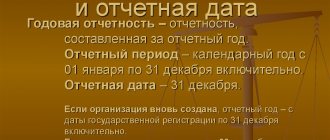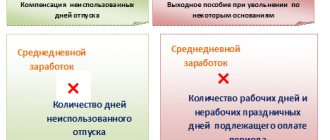According to the Federal Law of July 26, 2019 No. 210-FZ, on January 1, 2020, changes to Chapter. 25 of the Tax Code of the Russian Federation for autonomous institutions carrying out educational and (or) medical activities, as well as for museums, theaters, libraries and institutions providing social services to citizens.
Also see:
- Income tax changes from 2021: overview
- All changes to the Tax Code of the Russian Federation from 2021
Main changes for AU
Firstly, the income tax rate remains at 0% for organizations engaged in educational and (or) medical activities, as well as for organizations providing social services to citizens. Secondly, a 0% rate is provided for the income tax of museums, theaters and libraries.
Important: all institutions that have switched to using a 0% rate are not exempt from taxpayer obligations. In accordance with the requirements of paragraph 2 of Art. 289 of the Tax Code of the Russian Federation, taxpayers are required to maintain tax records and submit a tax return after the expiration of the tax period (calendar year).
Income tax for agricultural producers - calculation of the tax base
The zero rate for income tax should not be applied to the entire amount of profit subject to taxation, but only in relation to income received from activities directly related to the sale of products of own production and to the sale of processed products. In this regard , the taxpayer, according to clause 2 of Art. 274 of the Tax Code of the Russian Federation, is obliged to ensure separate calculation of the taxable base for each type of business transaction, the profit from which should be taxed at a different rate, different from the general
.
Before calculating income tax, it is necessary to reduce the size of the tax base by the amount of the enterprise's expenses. It is important that income and expenses are correlated - this means that income received as part of certain business transactions can be reduced solely by the expenses incurred for these same operations.
As for the possibility of accounting for non-operating expenses, it all depends on whether it is possible to determine whether such expenses belong to a specific type of activity:
- if it is possible to attribute non-operating expenses to a specific type of activity, they are taken into account when determining the tax base if the costs belong to activities taxed at a zero rate;
- if it is impossible to determine whether non-operating expenses belong to any type of activity, these expenses must be distributed between the types of activity of the taxpayer in proportion to the share of the corresponding income in the total volume of all income of the company.
According to the scheme presented above, the distribution of general business expenses of the enterprise is carried out.
“Zero” rate for medical and educational institutions
Let us remind you that according to clause 1.1 of Art. 284 of the Tax Code of the Russian Federation, medical and educational institutions pay income tax at a rate of 0%, subject to five conditions (Article 284.1):
- The institution has a license for the relevant type of activity (educational and (or) medical), obtained in accordance with the legislation of the Russian Federation.
- Income of the institution for the tax period from the implementation of this activity, taken into account when calculating the tax base in accordance with Chapter. 25 of the Tax Code of the Russian Federation constitute at least 90% of its income taken into account when calculating the tax base, or the institution for the tax period does not have income taken into account when calculating the tax base.
- The institution continuously employs at least 15 employees throughout the entire tax period.
- The number of medical personnel with a specialist certificate throughout the entire tax period is at least 50% of the total number of employees of the institution.
- During the tax period, transactions with bills and derivative financial instruments are not carried out.
In accordance with paragraph 6 of Art. 5 of Federal Law No. 395-FZ of December 28, 2010, a preferential rate could be applied if the conditions described above are met from 01/01/2011 to 01/01/2020. Federal Law No. 210-FZ (Article 2) excludes the words “until 01/01/2020” from this rule, which means that the above-mentioned institutions have the right to apply a zero rate for income tax indefinitely (subject to the conditions set out earlier).
That is, those who applied this rate this year, if desired and have grounds, can continue to do so in 2021 and in subsequent years. Please note that there is no additional need to submit an application to the tax authority.
- Institutions that have not previously applied a zero rate and plan to do so for the first time from 01/01/2020 (if there are grounds), in accordance with clause 5 of Art. 284.1 of the Tax Code of the Russian Federation no later than one month before the beginning of 2021, they must submit an application to the tax authority at their location along with copies of licenses to carry out educational and (or) medical activities.
- Institutions that previously applied a zero rate, but then switched to a general rate (20%), have the right to return to the zero rate again, but not earlier than 5 years from the tax period in which the transition was made.
Agricultural taxes: list, calculation procedure, reporting
The list of taxes for which an agricultural producer acquires an obligation to pay depends on the taxation system used. The table below shows a list of agricultural producer taxes on OSNO and Unified Agricultural Tax.
| Taxation system for agricultural producers | Unified agricultural tax | BASIC |
| Unified agricultural tax | Payment of unified agricultural taxes at a rate of 6% | Not paid |
| Income tax (legal entity) / personal income tax (individual entrepreneur) | Exemption from income tax for an organization, from personal income tax for oneself - for individual entrepreneurs | Payment of income tax (legal entity)/personal income tax (individual entrepreneur) in the general manner |
| VAT | Exemption from VAT with the exception of import transactions, settlements under simple partnership agreements, trust management) | General VAT payment |
| Property tax | Exemption from property tax, with the exception of property not used in the production of agricultural products | Payment of property taxes in the general manner |
| Transport tax | Exemption from tax on vehicles for special agricultural purposes (tractors, combines, milk tankers, etc.). For other vehicles – tax payment in accordance with the general procedure | Payment of transport tax in the general manner |
Unified agricultural tax
Agricultural producers in a special regime are recognized as payers of the Unified Agricultural Tax, the amount of which is calculated using the formula:
Unified agricultural tax = (Income – Expense) * 6%,
where Income is the total amount of income received by the organization from conducting agricultural activities; Expense is the amount of expenses incurred by an agricultural producer during the tax period.
When calculating the Unified Agricultural Tax, the tax period is the calendar year. In this case, taxpayers are required to make an advance tax payment based on the results of the reporting period (six months). The amount of the advance is determined by the formula:
ESHNavance = (Half-year income – Half-year expenses) * 6%,
where Half-Year Income is the amount of income received by the agricultural producer based on the results of the half-year (January 1 – June 30 of the current year); Half-year expenses are the amount of expenses incurred by the agricultural producer in the reporting period.
The taxpayer transfers the advance payment under the Unified Agricultural Tax until July 25 of the current tax period.
At the end of the calendar year, the agricultural producer submits a tax return to the Federal Tax Service, in which he indicates:
- annual indicators of income and expenses;
- estimated amount of unified agricultural tax for the year;
- the amount of Unified Agricultural Tax to be paid (the annual tax amount minus the transferred advance payment).
The deadline for filing a declaration and paying taxes for the year is March 31 of the year following the tax period.
The declaration form can be downloaded here ⇒ Declaration under the Unified Agricultural Tax.
VAT
Agricultural producers on the Unified Agricultural Tax are exempt from paying VAT, except for the following cases:
- VAT calculations on export transactions;
- payment of tax on transactions within the framework of simple partnership agreements or trust management of property.
When calculating VAT on the above operations, agricultural producers follow the standard procedure:
- filling out and submitting a tax return to the Federal Tax Service - monthly by the 25th day of the month following the reporting month;
- payment of tax on the basis of a tax return - until the 25th day of the next month.
When calculating the tax, the agricultural producer takes into account the amount of transactions carried out during the reporting period (calendar month). The date of the taxable transaction is determined on the basis of primary documents (customs declaration, act of completion of work under a property trust management agreement, etc.).
Agricultural producers on OSNO pay VAT in accordance with the general procedure - in accordance with Chapter 21 of the Tax Code of the Russian Federation.
Property tax
Organizations and individual entrepreneurs using the special Unified Agricultural Tax regime are exempt from paying property tax on real estate, equipment, and other property, provided that such property is used in the production of agricultural products, including:
- primary processing of agricultural products;
- industrial processing;
- sales of agricultural products;
- provision of services to agricultural producers (sowing crops, preparing fields for harvesting, pruning grapevines, etc.).
If an agricultural producer owns property that is not used in the production of agricultural products, then such property is subject to income tax in the general manner:
TaxProperty/x = Incentives * Rate,
where Stimushch is the value of property determined for tax purposes; Rate – the tax rate set by the local municipality in the amount and not exceeding 2.2%.
If there are property tax obligations, the agricultural producer:
- quarterly transfers an advance calculated in the amount of ¼ of the annual tax amount;
- at the end of the tax period (calendar year), submits a tax return to the Federal Tax Service ⇒ Property tax declaration;
- on the basis of the declaration, transfers to the budget the amount of tax minus advance payments.
Property tax is classified as a local tax, and therefore the deadline for paying the tax and filing a declaration is determined based on the legislative acts of the region.
Agricultural producers on OSNO pay property tax on real estate, equipment, fixed assets, and other property in the general manner. In this case, the tax is also charged on property used in the production of agricultural products.
Benefits for social service institutions
In general, changes affecting institutions providing social services to citizens are similar to changes affecting educational and medical institutions.
In accordance with clause 1.9 of Art. 284 of the Tax Code of the Russian Federation, this category of institutions, taking into account the changes introduced by Federal Law No. 210-FZ (Article 3), can apply a zero rate indefinitely, subject to the conditions described in Art. 284.5 Tax Code of the Russian Federation.
Institutions that continue to apply the zero rate in 2021 do not have to submit a corresponding application to the tax authority, and those who intend to apply it for the first time must submit an application no later than a month before the start of 2021, attaching information confirming the fulfillment of the conditions for application of the benefit.
The difference between social service institutions and institutions conducting educational and medical activities is that if, after applying the zero rate, they returned to the general rate, then in accordance with paragraph 9 of Art. 284.5 of the Tax Code of the Russian Federation they do not have the right to return to the preferential rate.
Unified agricultural tax: what kind of taxation system is it?
The unified agricultural tax is a system that involves its use by business entities subject to compliance with the criteria established by law. The tax itself replaces the income tax for organizations for companies and personal income tax for entrepreneurs.
In 2021, entities using this system are also exempt from VAT. However, starting in 2021, this rule is changing - payers will be required to determine and pay VAT, and will also be able to deduct input tax.
The Tax Code establishes that it will be possible to obtain tax exemption, but for this, income will have to fall within the established limit.
For 2021 it is set at 100 million rubles, for 2021 - 90 million rubles and then in descending order. Attention: starting from 2021, entities using the Unified Agricultural Tax system must pay property tax.
Property that is used directly in the production of agricultural products will not be included in the base. In connection with the introduction of sanctions and a significant increase in agricultural production, a further increase in the tax burden on this system is possible.
This system can only be used by those entities that carry out primary processing of their own agricultural products, and is not available to those involved in secondary processing. The transition to agricultural tax is voluntary.
Attention: when using Unified Agricultural Tax, a business entity has the right to use UTII for other types of activities. However, it is imperative to control the share of revenue from core activities.
Using this system, it is possible to obtain benefits for paying social contributions on the earnings of registered employees from companies and entrepreneurs.
Benefits for museums, theaters and libraries
Starting from 01/01/2020 Art. 284 of the Tax Code of the Russian Federation is supplemented by clause 1.13, according to which a 0% tax rate may be applied to the tax base of museums, theaters and libraries, the founders of which are constituent entities of the Russian Federation or municipalities, if the conditions established by Art. 284.8 of the Tax Code of the Russian Federation, introduced from the specified date.
This rate applies to the entire tax base if the following condition is met: if the ratio of income from the activities of museums, theaters and libraries included in the List of types of cultural activities established by the Government of the Russian Federation to all income taken into account when determining the tax base in accordance with Chapter. 25 of the Tax Code of the Russian Federation, greater than or equal to 90%.
You do not need to obtain permission to use the benefit; you only need to confirm your right to it, since it is of a declarative nature.
In accordance with paragraph 3 of Art. 284.8 of the Tax Code of the Russian Federation, in order to use benefits for museums, theaters and libraries within the deadlines established for submitting tax reports for the tax period, that is, before March 28 of the year following the reporting year, it is necessary to submit to the tax authority at the place of your location information about the share of income determined in in accordance with the provisions of paragraph 2 of this article in a form that will be approved by the Federal Tax Service.
Materials from the newspaper “Progressive Accountant”, budget issue, winter 2021.
Amina Rusak, accountant-consultant of the Consultation Line.
Read also
23.04.2020
Taxation of agricultural producers
For organizations and individual entrepreneurs with the status of agricultural producers, a special tax regime has been created, within the framework of which business entities pay the Unified Agricultural Tax (USAT) and are exempt from paying income tax (for legal entities) and personal income tax (individual entrepreneurs for themselves).
According to Art. 346.2 of the Tax Code of the Russian Federation, an agricultural producer is recognized as a payer of the Unified Agricultural Tax if the following conditions are met: that the share of production of agricultural products of the organization (IP) is at least 70% of the total volume.
At the same time, according to clause 2 of Art. 346.2 of the Tax Code of the Russian Federation, the category of agricultural producers includes not only organizations (IPs) that are directly involved in the production of agricultural products, but also business entities that:
- carry out primary processing, processing, sale of agricultural goods;
- provide support services to agricultural producers (pruning garden trees, preparing fields for sowing/harvesting, replanting rice, spraying crops, etc.).
If the above requirements are met, the agricultural producer acquires the status of a Unified Agricultural Tax payer on the basis of a notification submitted to the Federal Tax Service:
- until December 31 of the current year - for the transition to the Unified Agricultural Tax from January 1 of the next year;
- within 30 days from the date of registration in the Unified State Register - when using the Unified Agricultural Tax when registering as a taxpayer.
The notification form can be downloaded here ⇒ Notification of the transition to the Unified Agricultural Tax f.26.1-1.
If an agricultural producer has not submitted a notification to the Federal Tax Service about the transition to the Unified Agricultural Tax, then by default he is recognized as a tax payer under the OSNO. Also, an agricultural producer uses OSNO if the production volume of agricultural products is less than 70% of the total production volume of the business entity.
Loss of the right to apply tax
All situations where economic entities, be they legal entities or entrepreneurs, lose the ability to apply the Unified Agricultural Tax are enshrined in regulations.
These include:
- Failure to comply with the type of activity for which the Unified Agricultural Tax system is used, that is, the production, processing and sale of agricultural products is not carried out.
- In addition to the activities of creating, processing and selling agricultural products, the company is engaged in the production of excisable goods or the gambling business.
- Violation of the share of income attributable to the creation, processing and sale of agricultural products. The right is lost if the share of this income falls below 70%.
- The number of people employed under employment contracts in fishing farms and entrepreneurs exceeds 300 people. This restriction does not apply to agricultural producers.
Attention: as soon as one of the above cases occurs, an organization or company must report this to the tax office independently using a special form “Notification of loss of the right to unified agricultural tax”, for which form 26.1-2 is provided. There is a deadline of 15 days for submitting this document.
At the same time, an economic entity will be able to return to this regime after a year has passed since it lost this right. The loss of the right to use the Unified Agricultural Tax leads to the fact that from the beginning of the year it is necessary to recalculate all taxes according to OSNO in the new regime - income tax (personal income tax for individual entrepreneurs), VAT and pay them independently.
Calculation of single tax using an example
It is not difficult to calculate the single tax on agricultural products. You just need to multiply the tax rate by the tax base. To calculate the tax base, you need to subtract the full amount of expenses from income. The number of income and expenses takes into account all income and expenses since January 1 of the current year.
Income is considered to be those funds received as a result of the sale of goods, etc.
Income is reduced due to expenses necessary for the existence of the enterprise. These include:
Simple calculation example
- purchase or repair and restoration of basic productive units
- buying office supplies
- to acquire or create those assets that are considered intangible
- deductions for rent or lease renewal
- expenses due to material losses (breakdowns, destruction of property)
- funds that go to pay the employees of the enterprise
- expenses for insurance (personal or property), which can be either mandatory or voluntary
- costs of creating a safe environment in case of fires
- expenses on transport – maintenance, purchase, repair, replacement of spare parts, etc.
- staff travel expenses
- the need to hire accountants, lawyers or notaries
- funds are spent (especially in agricultural production) on various examinations
- bonuses for the best employees
- to advertise your own products (in most cases, this expense is fully justified and increases income several times)
This list is incomplete. It was approved by law at the government level and includes some more items that can be used to extend this list. You can also find a clause in it that organizations can include unprofitable activities for previous years in the list of expenses.
You can give a simple example of calculating a preferential tax of this type. The information presented in it cannot be the ultimate truth, and is given only as an example.
IP Ivanov S.A. is engaged in growing vegetable products for subsequent sale. In 2015, he began to apply a preferential taxation system for agricultural producers.
Initial data for 2015:
- income from the sale of vegetable products for 2014, in accordance with Ch. 25 of the Tax Code of the Russian Federation, – 7,800,000 rubles.
- expenses in 2015, in accordance with paragraph 2 of Art. 346.5 of the Tax Code of the Russian Federation reached the figure of 5,200,000 rubles.
- the loss for 2014 amounted to 300,000 rubles.
- in the second half of the year the entrepreneur paid 15,000 rubles.
- in the second half of the year, the taxpayer sent 20,000 rubles to the budget.
The amount of tax you need to pay is calculated as follows:
- to determine the tax base, you need to subtract the number of expenses from the amount of income: 7,800,000 – 5,200,000 = 2,600,000 rubles
- subtract the amount of loss for the previous year from the tax base: 2,600,000 – 300,000 = 2,300,000 rubles
- We calculate the amount of single tax that will need to be paid in 2015: 2,300,00 X 6% = 138,000 rubles
- to calculate the remaining amount of agricultural tax for 2015, which the entrepreneur still needs to pay, we subtract from the tax number those payments that he made earlier: 138,000 – 15,000 – 20,000 = 103,000 rubles
Based on this, we can say with confidence that IP Ivanov S.A. Before the end of March 2021, he must fill out a tax return and pay 103 thousand rubles of tax to the budget.
Transition to Unified Agricultural Tax
The process of transition to the unified agricultural tax is no different from other types of preferential taxation.
Rules for the transition to Unified Agricultural Tax
An entrepreneur who pays taxes must write a proper notice before the last day of the current year and take it to the tax office. There is a form approved by government organizations for this. For reference, it can be found on the website of the Federal Tax Service.
The state does not force agricultural entrepreneurs to switch to the conditions of a single tax. This is a purely voluntary matter for each of them. And no one has the right to punish him for this. This tax system gives him the right to benefits, but does not force him to agree with it.
Newly registered companies have the right to submit an application to the tax service due to the desire to switch to the unified agricultural tax within a month after they are registered there.
But not everyone can switch to the system of unified agricultural taxation. To do this, you need to meet several important criteria listed earlier. In addition, it must be the manufacturer of agricultural products, and not their subsequent distributor or processor.
To be able to switch to the new tax system starting next year, you need to write an application before the last day of December of the current year. Business entities must submit an application to the tax department located at their place of residence. Legally registered companies - at the place of registration.
It is impossible to change the tax system in the middle of the year. The procedure is only possible when submitting an application at the end of the year. Moreover, the effect of the Unified Agricultural Tax will apply to the entire next year.
Features of the tax system for agriculture
Until the end of this period, taxpayers will not be able to switch to the new tax system. To do this, you will need to wait until the unified agricultural tax expires.
If an enterprise ceases agricultural activities in the middle of the tax period, it must be reported to the tax service. The form you need to use to apply is posted on the Federal Tax Service website.








